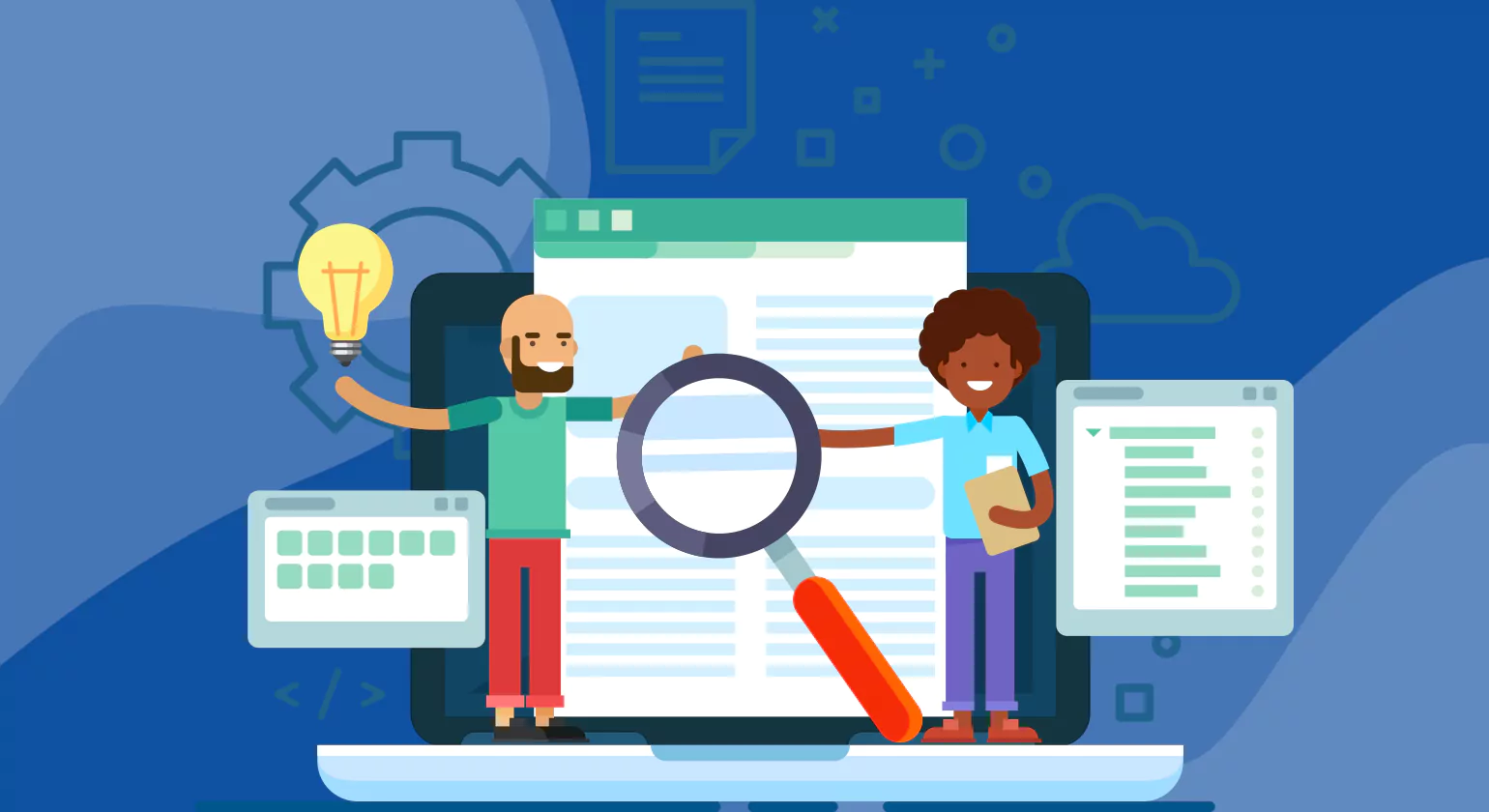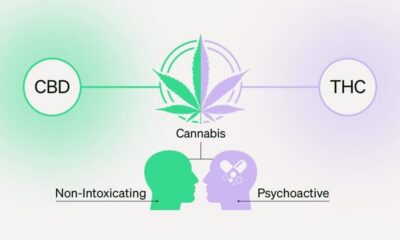Technology
Top Accessibility Testing Tools to Ensure Web Compliance

It is critical to conduct accessibility tests on the website to discover accessibility issues and ensure that persons with disabilities have equal access to digital content as mandated by various laws. Accessibility testing checks web pages for typical accessibility issues using an automated testing tool. These tools assist in performing website accessibility testing to ensure that the website is more accessible to people with impairments.
The accessibility testing tools are chosen based on the website’s requirements and how much they will cost. Following such requirements, these tools are designed to support web compliance by adhering to accessibility standards. They help check if a website is following the Americans with Disabilities Act (ADA), Section 508, the World Wide Web Consortium’s Web Content Accessibility Guidelines (WCAG 2.0), and other usual digital accessibility standards.
In this article, we will cover the top modern accessibility tools and explain how they help in ensuring web compliance. We will also discuss the key elements of accessibility testing tools. Before moving, let’s have a brief overview of web compliance for accessibility testing tools.
Web Compliance in Accessibility Testing
The Web Accessibility Initiative (WAI), a division of the World Wide Web Consortium (W3C), created a set of principles known as web conformance. It seeks to ensure that everyone, including those with disabilities, can access web content. Visual, auditory, sensory, verbal, physical, cognitive, linguistic, learning, and neurological impairments are only a few of the many types of disabilities covered by the rules.
All digital and information technology used by government agencies must be accessible to people with disabilities as part of this compliance.
Benefits of Web Accessibility Testing Tools
Digital Inclusion and Equality
Accessibility testing, which includes people with impairments in equal measure, will improve access to information and offerings. It helps to eliminate barriers and ensure that everyone has equal access to and benefits from digital services.
Legal Compliance
Many different frameworks and standards are being developed with the assistance of various countries or regions where accessibility is recognised as a requirement for the use of the virtual platform. Accessibility testing lets organisations comply with regulations and guidelines aimed at reducing prosecution risks while also boosting digital accessibility.
Enhanced User Experience
Accessibility is more than just compliance; it is a strategy for increasing access for all users. Accessibility features such as opportunity text for photos or video captioning may also be useful to people who do not have disabilities.
By making more digital content available, organisations may offer an improved user experience that appeals to a wider range of users.
Reaching a larger audience
According to the World Health Organisation, approximately 15% of the sector’s population is impaired. Making the digital information accessible dramatically increases the number of potential users. This not only benefits the right enterprise, but it also promotes the ideas of inclusivity and diversity.
Brand Reputation
The corporation’s commitment to accessibility is a strong reputational attribute. This ensures a commitment to social responsibility, which boosts goodwill among users and other partners with whom the organisation collaborates.
Search Engine Optimisation
As time goes on, search engines like Google tend to include accessibility factors when assigning ratings to unique websites. Content that is well-prepared and easy to access makes search engine optimization easier.
Evolution of Technology
The tools and procedures for accessibility testing also advance with the times. By implementing those adjustments, it becomes feasible for organisations to utilise the most recent technologies, allowing for permanent beautification of accessibility.
Human Rights as well as Moral Issues
A natural human being is taken into consideration, along with statistics and time. The ethical principle of accessibility, which states that all people should have access to it regardless of their level of ability, is upheld by organisations that promote accessibility. Prioritising range not only ensures compliance with legal requirements but also increases popularity and encourages social responsibility.
Long-Term Cost Savings
Early resolution of accessibility difficulties during the development process is usually more cost-effective than later correction. Investing upfront in accessibility testing and planning will pay off in the long run by avoiding costly repairs and compliance issues.
Employee Productivity & Satisfaction
Accessibility features now not only benefit visitors, but can also benefit corporate personnel. Employees with impairments can make great contributions to the workplace due to readily available software and technology.
Key Elements Tested by Accessibility Testing Tools
- Screen reader accessibility: The key to screen reader accessibility is to describe all text, graphics, and controls so users with screen readers can understand them. Automated accessibility testing can help reveal if there is no alternate text available or if web elements are not correctly labelled, which can create challenges for visually impaired people.
- Subtitles and written scripts: Making certain that multimedia content, like videos and audio, provides subtitles or written scripts for users with hearing difficulties. This is particularly important for web and mobile applications rich in video content, where users with hearing impairments may need alternative formats to interact with the material.
- Navigation and page layout: Accessibility tools can detect flaws with site menus or usability and make recommendations to improve the user experience for persons using assistive technologies.
- Colour and readability contrast: Fonts with higher character complexity or ambiguity can be identified using accessibility tools. They can then determine whether the font and background elements have adequate colour contrast for accessibility. A colour contrast checker usually looks for this.
- Links, either internal or external: Non-informative link wording, such as “click here”, as well as broken or missing links, will be detected by accessibility testing tools. Certain tools may advise ways to create more useful links.
- Adjustable font size: Accessibility features will evaluate font size and parsing to ensure that people with disabilities have the best possible reading experience.
- Anchor and alt text: Alt text allows users with disabilities to understand specific web elements on a page. Accessibility testing tools identify missing alternative text for images and look for input in site elements like symbols and emojis that use alternative text, ensuring its presence.
- Buttons: Accessibility features ensure that buttons are functioning by analysing their labels, spacing, and proportions across the website.
Top Accessibility Testing Tools
LambdaTest
LambdaTest is an AI-native test orchestration and execution platform. It enables testers to perform both real-time and automated tests at scale across over 3000 environments and real mobile devices. The platform’s advanced capabilities focus on AI test automation, intelligent test execution, and test result analysis to optimise testing efforts. LambdaTest offers a powerful automated accessibility testing tool that simplifies detecting and resolving accessibility issues in web applications.
It streamlines testing by integrating with the builds and reducing maintenance time, as testers can maintain compliance and inclusivity effortlessly. Accessibility testing with LambdaTest includes issue detection techniques like semi-automatic scanning for more complex issues, automatic scanning for static issues, and manual testing for usability issues using screen readers.
In addition, its AI-powered quality management features optimize software testing through machine learning and advanced analytics. This makes it a comprehensive AI test tool. The platform enables testers to track changes in the code and test execution process, providing complete insight into quality risks across the delivery pipeline. This means that testers may quickly arrange and manage tests while harnessing AI capabilities for continuous testing.
With minimal programming experience, testers can simply automate web behaviours such as clicking links or filling out forms using the Selenium framework. This makes LambdaTest a good choice for testers who wish to adopt low-code solutions.
Pa11y
Pa11y is a tool for monitoring the web accessibility of websites, specifically the Pa11y dashboard. The most recent version includes guidelines such as WCAG, W3C Web Content Accessibility rules, Section 508, and US federal procurement regulations. Pa11y is a free, open-source, self-hosted application that allows testers to monitor an unlimited number of sites and conduct tests automatically every day. It helps by producing reports on web accessibility evaluation outcomes, automatically checking individual web pages, groups of web pages, or sites, and password-protected or restricted pages. Images, HTML, and CSS are among the formats that are supported. The service includes both an online checker and server installation.
DYNO Mapper
The tool, DYNO Mapper, is a sitemap generator that assesses the web accessibility of websites and applications. DYNO Mapper provides content inventory and auditing, along with daily keyword tracking. Visual sitemaps are used to display results, making task identification and planning easier and more efficient. Its most recent version includes authentication support for testing private websites and web applications, alongside monitoring and notifications.
WCAG, Section 508, federal procurement rules in the United States, the Stanca Act, BITV, Italian accessibility laws, and German government standards are among the guidelines that will be covered. The tool helps by automatically checking groups of pages or websites, even restricted or password-protected ones, and generating monitoring results. CSS, HTML, and XHTML are all supported formats. Individuals, groups, and enterprises can all obtain licenses.
Remediate.co
Remediate.co offers automatic digital accessibility testing for websites, online applications, and PDFs, adhering strictly to WCAG guidelines at all compliance levels. Remediate.co automated testing allows testers to check the accessibility of a website or web application. Provide team members with alerts about problems to ensure that the website or web application complies with WCAG standards. Remediate.co’s custom form authentication allows testers to test restricted websites or web applications behind a login screen. It does not require installation and is compatible with major multi-factor authentication protocols.
Acrobat DC
Adobe Acrobat DC is an accessibility testing tool that helps testers better manage all of their key applications. The guidelines covered are WCAG 2.1, PDF/UA, and Section 508 compliance. The collaborative PDF review service is one of the features that makes it easier to get users’ feedback. It also provides a consistent experience across all devices, including mobile, web, and desktop, featuring a home view, a documents viewer, a tool panel, commenting properties, and more.
Acrobat DC generates evaluation results reports, providing step-by-step evaluation instructions and showing information from scanned web pages. It automatically reviews individual pages, including those that are restricted or password-protected. The hosted service, server installation, and online checker are all included in the open-source license.
Accessibility Checklist
The Accessibility Checklist is a free and quick tool to review all of the recent and essential web accessibility regulations. It covers the WCAG guidelines, the W3C Web Content Accessibility Guidelines, Section 508, and government procurement regulations in the United States. The tool provides a reduced language structure, and the user interface is simple to browse.
Testers can filter the guidelines by topic, which includes keyboard, pictures, and forms. Another option is to filter by standard levels, such as A, AA, or AAA. The accessibility checklist gives step-by-step guidelines for evaluating the site’s web accessibility. Accessibility Checklist is a free tool that does not require a paid license. CSS, HTML, XHTML, and images are all supported formats.
Conclusion
In conclusion, Web accessibility tools help to ensure that websites are inclusive and comply with standards. It promotes the development of web applications so that all people, with or without disabilities, can use them. The WCAG Principles and Guidelines provide a rigorous framework for testing accessibility and ensuring that the website features an all-inclusive design.
Accessibility tests allow testers to monitor accessibility concerns and produce web content that is easily accessible to everyone. By including this testing in the early stages of design and testing throughout development, testers can ensure that websites are usable by anybody, regardless of ability. The benefits extend beyond legal requirements; accessible design improves the user experience for everybody, promotes innovation, and aligns with the social obligation of an organisation.
Technology
Why AI Employee Tracking Alone Can’t Build a Thriving Company

Imagine running a small business where every keystroke, email, and coffee break is tracked by an algorithm. Sounds efficient, right? But when I helped a friend streamline her startup’s operations in 2025, we quickly learned that relying solely on AI employee tracking—like the best employee tracking software—can backfire. While tools like Controlio offer powerful insights into productivity, they miss the human spark that makes a company truly great. Let’s explore why AI tracking alone isn’t enough and what really drives a thriving workplace.
The Limits of AI Tracking: Numbers Over Nuance
AI employee tracking tools, like the Controlio app, are designed to boost efficiency by monitoring metrics such as time spent on tasks or app usage. They’re fantastic for spotting patterns—say, identifying when your team’s bogged down by repetitive work. But here’s the catch: they reduce people to data points. When my friend’s startup leaned too heavily on tracking software, her team felt like cogs in a machine, not valued contributors.
Research shows that excessive surveillance can tank morale. A 2024 Cornell study found employees under AI monitoring reported higher stress and lower productivity compared to those with human oversight. Why? Algorithms lack context. They can’t tell if someone’s late because they were helping a colleague or if a long email thread was a creative brainstorm. Over-reliance on AI risks alienating your team, stifling the very innovation you’re trying to foster.
Human Connection: The Heart of a Great Company
Great companies aren’t built on dashboards alone—they thrive on trust, collaboration, and shared purpose. I saw this firsthand when my cousin’s catering business hit a rough patch. Instead of doubling down on tracking tools, she hosted weekly team huddles to share ideas and celebrate wins. The result? Her staff felt heard, and turnover dropped by 30% in six months.
AI can’t replicate the empathy of a manager who notices a team member’s off day and offers support. It can’t spark the camaraderie of a spontaneous lunchroom chat that leads to a breakthrough idea. Building a strong company culture means prioritizing relationships over reports. Encourage open communication, mentorship, and team-building—elements no algorithm can quantify.
Creativity and Innovation: Beyond the Algorithm’s Reach
AI tracking excels at measuring output but struggles with intangibles like creativity and emotional intelligence. When I worked with a local design agency, we noticed their AI tool flagged “unproductive” hours spent sketching or brainstorming. Yet those moments birthed their best campaigns. Over-focusing on metrics can suffocate the creative freedom that drives innovation.
A 2025 McKinsey report highlights that companies fostering experimentation and collaboration outperform those obsessed with efficiency metrics. Give your team room to take risks—whether it’s prototyping a bold idea or debating a new strategy. Tools like Controlio can track time, but they can’t measure the spark of a game-changing idea born over coffee.
Trust vs. Surveillance: Striking the Right Balance
Constant monitoring erodes trust, and trust is the glue of any great company. Employees who feel watched like hawks are less likely to take initiative or share honest feedback. A Reddit thread from 2024 echoed this, with workers venting about AI tracking making them feel “on edge” and less loyal to their employers.
When my friend’s startup introduced transparent policies about how tracking data would be used—like improving workflows, not punishing pauses—her team relaxed. Use AI tools to empower, not police. Share insights with employees, involve them in decisions, and set clear boundaries. For example, use Controlio to optimize schedules, but pair it with regular check-ins to show you value their input, not just their output.
Ethical Concerns: Avoiding Bias and Burnout
AI isn’t neutral—it can amplify biases or push employees toward burnout. A 2025 Business Insider report noted that poorly designed AI tracking systems may unfairly flag certain groups, like remote workers, due to inconsistent data patterns. Plus, an overemphasis on productivity metrics can lead to exhaustion, with 60% of surveyed employees reporting stress from constant monitoring.
To counter this, regularly audit your AI tools for bias and ensure they align with your company’s values. Promote work-life balance with policies like flexible hours or mental health days. My friend learned this the hard way when her team’s morale dipped—she countered it with wellness programs, and productivity soared.
Final Note: Blend Tech with Heart for Lasting Success
AI employee tracking, like the Controlio app, is a powerful tool for streamlining operations, but it’s not a magic bullet. Great companies are built on trust, creativity, and human connection—qualities no algorithm can fully capture. My friend’s startup flourished when she balanced tech insights with genuine care for her team, proving that people, not just data, drive success.
In 2025, embrace AI as a helper, not a boss. Use tools to spot inefficiencies, but invest in mentorship, open dialogue, and a culture where employees feel valued. That’s the recipe for a company that doesn’t just survive but thrives. Ready to strike that balance? Start exploring smarter ways to blend tech and heart today.
Technology
“Duster SUV: Complete Guide to Features, Specs, Safety, and Buying Tips”

Introduction
The word Duster brings to mind a simple, sturdy SUV many people trust. This car feels practical and honest. It fits families, adventurers, and daily drivers alike. People praise its space, its simple tech, and its low cost to own. In this article, I explain what makes the Duster special. I use clear, short sentences that are easy to read. I give real facts, helpful tips, and plain advice. I show numbers where they matter and share trusted insights. Read on for design notes, engine choices, safety facts, buying tips, and six common questions. By the end, you will know whether this model suits your life and budget.
What it is
The Duster is a compact SUV that blends value with practicality. It started as a no-nonsense crossover people could afford. Over time, it grew more refined while keeping its core strengths. Today it comes in several versions for many markets. You can find models with mild-hybrid help or classic petrol engines. The Duster aims to offer a roomy cabin without high costs. It targets buyers who want a solid SUV without fancy frills. That clear purpose shaped its design and its price strategy. Many drivers see it as an honest car that gives you what you need.
Design and styling
The look of this compact SUV mixes toughness and neat lines. It keeps a broad stance and raised wheel arches. The front often shows a strong light design and simple grille work. Inside, the layout favors durable materials and sensible storage. The exterior has roof bars and protective cladding for outdoor use. Designers focused on useful features over delicate trims. That choice helps keep repair costs low over time. If you want flashy leather and soft touch everywhere, this might not be it. But if you want a rugged, honest SUV ready for trips, it fits the bill.
Engines and powertrains
You can pick from small petrol engines and mild-hybrid setups. Some markets also see a larger 2.0 petrol and 4×4 option. Engine output varies by region and trim level. The simplest petrol is easy to maintain and quite fuel friendly. The mild-hybrid choice helps with short town runs and saves fuel. For tougher terrain, a 4×4 option offers extra traction and control. Manuals, CVTs, and automatic options appear depending on model year. Always check exact engine details where you live before you buy. Each version balances performance and fuel economy differently.
Fuel economy and efficiency
This SUV can be quite frugal, depending on the engine you pick. Smaller petrols often return good fuel efficiency in mixed driving. Hybrid versions claim better urban economy and lower emissions. The mild-hybrid systems help reduce engine load at idle and in slow traffic. Real-world economy will change with load, terrain, and driving style. Drivers who favor calm acceleration often see the best numbers. If you plan long highway trips, choose an engine tuned for steady cruising. Official figures give a useful baseline when you compare trims.
Off-road capability and ground clearance
Raised ride height makes this model useful on rough tracks and muddy roads. Some trims list over 200 mm of ground clearance for easy approach. Four-wheel drive models include terrain selectors for snow, mud, and sand. The suspension is tuned for resilience rather than sporty handling. Protective skid plates help against rocks and bumps on trails. That setup gives confidence for weekend camping and farm access roads. Still, it is a compact SUV, not a heavy-duty truck. Match expectations to the terrain you’ll tackle most often.
Interior space and practicality
The cabin focuses on smart storage and easy cleaning for busy lives. Boot volume ranges from mid to large capacity, depending on trim and engine. With rear seats folded, the load area grows to take longer items. The double-floor and compartments help keep gear tidy on long trips. Front and rear passengers get sensible legroom for the class. Infotainment supports phone mirroring in many trims for maps and music. Materials lean toward durable plastics and simple switches for reliability. This makes the interior practical for family life and outdoor adventures.
Safety and ratings
Safety equipment varies by market and trim level. Many versions now come with driver aids like lane assist and emergency braking. Older models had fewer safety features, but recent upgrades improved this area. Buyers should look for multiple airbags, stability control, and strong crash ratings. Always compare the fitment of safety tech between trims before you buy. Choosing a version with active safety aids makes daily driving more secure. Families especially benefit from these modern protections.
Ownership and running costs
One big strength is the low cost of ownership compared to rivals. Insurance and repair parts tend to be cheaper for this model. Service intervals are reasonable and many mechanics know the platform. Fuel bills depend on engine and driving habits, but smaller engines keep costs down. Resale value varies by region and trim, so check local used prices. Warranty length also differs by country. If you plan to buy used, ask for full service history and check for rust or heavy off-road wear. Overall, the Duster aims to be affordable to run and repair.
Trim levels and options
Manufacturers offer a clear set of trims from basic to well-equipped. Basic trims give the essentials to keep the price low. Mid trims add nicer infotainment, alloy wheels, and comfort items. Top trims may include leather-effect seats and advanced driver aids. Some regions add unique packs like camping gear or cargo versions. You can often choose bar-style roof racks and protective mats. Decide which features you need before picking a trim. That saves money and avoids paying for extras you will not use.
How it compares with rivals
Against similar compact SUVs, the Duster wins on price and practicality. Some rivals offer fancier cabins or sharper handling. Others will have stronger dealer networks or better long-term resale. If you want rugged looks and simple tech, this model often leads. If you prefer premium fit and more silence inside, look at other brands. Compare boot size, fuel numbers, and safety kit when you shop. Test drives across a few models reveal which feels best for your needs.
Maintenance, tips, and common issues
Routine checks keep this SUV reliable for many years. Watch for common wear items like brake pads and suspension bushes. Keep the air filter fresh if you drive dusty roads often. For long trips, check belts and fluid levels before you leave. Choose genuine parts when possible, but good aftermarket parts can save money. If the car has a CVT, follow the service rules for transmission oil. Joining owner groups can give you tips on common fixes. These small steps help avoid surprises and control repair costs.
Customization and accessories
Owners often add roof racks for bikes and kayaks. Boot liners and mudflaps protect the paint and the interior. For camping, simple tents and sleep packs make trips easier. All-weather mats help keep the cabin clean in winter. Some dealers sell protection packs with skid plates and light guards. Choose only tested accessories that fit factory mounts. Proper accessories raise the car’s usefulness without harming safety. A small investment in the right bits makes the vehicle far more versatile.
Environment and hybrid tech
Newer mild-hybrid and hybrid setups reduce fuel use in town. The hybrid option often lets the engine rest for short electric-only runs. This suits stop-and-go traffic in cities well. Hybrid tech also helps reduce emissions and fuel bills. Still, the fuel gains depend heavily on how you drive. Long highway trips may show less benefit than urban driving. If your commute is mostly city, a hybrid variant can cut costs. Always review real-world test results to compare engines before buying.
Best use cases and who should buy it
The Duster fits families who want space and low costs. It serves people who enjoy weekend trips off the beaten track. Small business owners like cargo versions for city deliveries. First-time SUV buyers get easy driving and affordable upkeep. Buyers who want full luxury or sporty handling should consider other models. If you value honest design, big boot space, and rugged style, this one is sensible. Matching the trim to your needs ensures good value for the money.
Conclusion — is it right for you?
In short, the Duster blends value, space, and rugged practicality. It is not the quietest or plushest cabin in its class. But it will carry people, luggage, and pets without fuss. If low running costs matter, it can be a smart choice. Read the spec sheet carefully in your country before you buy. Test drive the same engine and trim you plan to purchase. Check local prices and dealer support for your area. If you like simple, practical design and honest value, this SUV may fit your life.
FAQs
Q1 — What is the best engine for daily driving?
A small petrol or mild-hybrid often works best for daily use. These choices give low city fuel use. They feel calm and save money on regular runs. If you carry heavy loads often, choose the bigger petrol. For mixed town and highway trips, a mild-hybrid balances economy and comfort.
Q2 — How much boot space does it offer?
Boot space depends on trim and engine choices. Typical figures start around mid-hundreds of litres. Folding the rear seats adds a lot of cargo room. Official brochures list exact litres for each version. Always confirm the details for the model in your region.
Q3 — Is the four-wheel drive model worth it?
Four-wheel drive helps if you face mud, snow, or steep tracks. It adds weight and usually lowers fuel economy. For mostly city driving, a 2WD version is often enough. Choose 4×4 if you need traction on rough ground frequently.
Q4 — Are parts and servicing expensive?
Parts and servicing tend to be affordable compared to premium rivals. Many mechanics know the platform well. Warranty coverage varies by country. Regular servicing and modest care keep costs predictable.
Q5 — How safe is the model?
Safety kit and crash scores differ by year and market. Some older models had fewer aids, but newer versions include more. Look for emergency braking, lane assist, and multiple airbags. Confirm the exact features on the trim you plan to buy.
Q6 — Should I buy new or used?
New gives full warranty and the latest gear. Used saves money but needs careful checks. Ask for service records and inspect for off-road wear. If budget is tight, a certified pre-owned unit can be a balanced choice.
Technology
What is Zivechatz? Full Review, Features, and How to Use It
-

 Technology3 years ago
Technology3 years agoIs Camegle Legit Or A Scam?
-

 Travel3 years ago
Travel3 years agoNEW ZEALAND VISA FOR ISRAELI AND NORWEGIAN CITIZENS
-

 Uncategorized3 years ago
Uncategorized3 years agoAMERICAN VISA FOR NORWEGIAN AND JAPANESE CITIZENS
-

 Technology3 years ago
Technology3 years agoRNDcoin: Korea’s first blockchain project and a world-class cryptocurrency
-

 Fashion1 year ago
Fashion1 year agoGoda Perfume Reviews: Is It Worth Your Investment?
-

 Health3 years ago
Health3 years agoHealth Benefits Of Watermelon
-

 Home Improvement8 months ago
Home Improvement8 months agoArtificial Grass Designs: Perfect Solutions for Urban Backyards
-

 Fashion3 years ago
Fashion3 years agoBest Essentials Hoodies For Cold Weather















